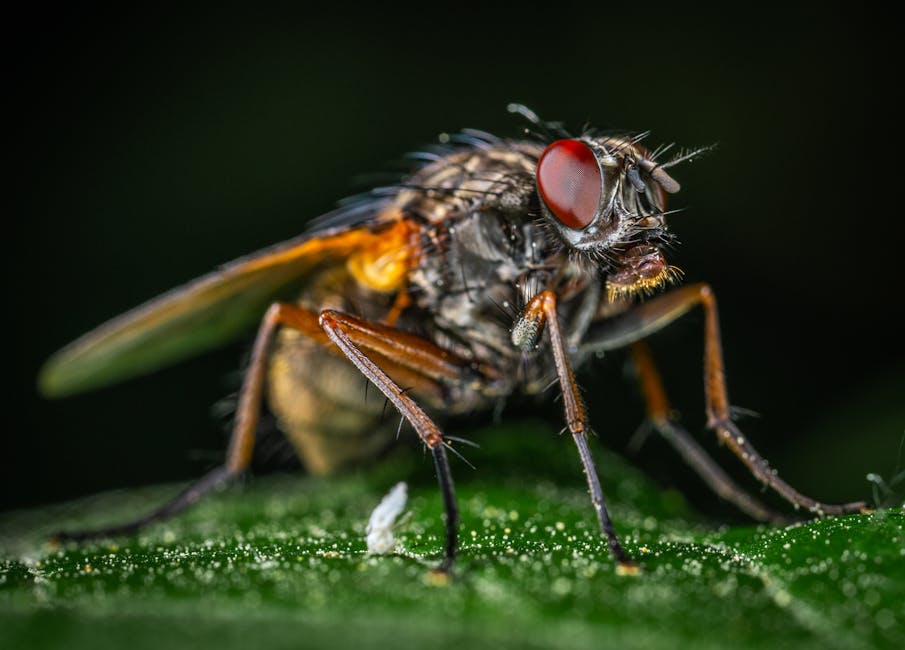

Are you curious about how pest control methods impact the lifespan of flies? Discover the surprising connection between pest control and how long flies live!
Understanding the Lifespan of Flies
Flies typically have a lifespan ranging from 15 to 30 days, depending on various factors such as species, environment, and food sources. Understanding flies’ natural lifespan is crucial when considering how pest control methods may influence their longevity.
The life cycle of a fly consists of four stages: egg, larva, pupa, and adult. Each stage plays a vital role in determining the overall lifespan of the fly. Factors such as temperature, humidity, and food availability can significantly impact the duration of each stage, ultimately affecting how long flies live.
Different fly species exhibit distinct lifespans. For instance, the common housefly typically lives for about 15 to 25 days, while fruit flies have a shorter lifespan of around 8 to 10 days. These variations in lifespan highlight the importance of considering the specific type of fly when analyzing the effects of pest control.
In addition to external factors, genetic predispositions also play a role in determining flies’ longevity. Some flies may have inherent traits that enable them to live longer under adverse conditions, posing challenges for pest control efforts targeting their population.
Impact of Pest Control on Fly Lifespan
Pest control measures can significantly impact flies’ lifespans by disrupting their life cycle and reducing their population. Methods such as insecticides, traps, and biological control agents target flies at different stages of development, affecting their overall lifespan.
Chemical insecticides used in pest control can decrease the population of fly species by targeting adult flies or interfering with the development of fly larvae. While effective in controlling fly infestations, these chemicals may also have unintended consequences on non-target species and the environment.
Biological control methods, such as introducing natural predators of flies or using microbial agents to combat fly populations, offer more sustainable alternatives to traditional chemical insecticides. These methods aim to control fly populations while minimizing harm to beneficial insects and the ecosystem.
Both homemade and commercial fly traps provide another means of pest control that can impact fly lifespan. By luring flies into traps where they cannot escape, these devices help reduce fly numbers and prevent them from breeding, ultimately influencing how long flies survive in a controlled environment.
Integrated pest management strategies that combine multiple control methods, such as sanitation, exclusion, and biological controls, offer a holistic approach to pest control that considers the long-term impact on fly lifespan and environmental sustainability. By addressing the underlying causes of fly infestations, these strategies aim to reduce reliance on chemical interventions.
Factors Influencing Fly Longevity
Various factors influence flies’ longevity, including environmental conditions, food availability, the presence of predators, and exposure to pesticides. Flies living in favorable environments with abundant food sources and limited predators may have longer lifespans than those facing harsh conditions.
Temperature plays a crucial role in determining fly lifespan. Flies are cold-blooded insects that rely on external temperatures to regulate their bodily functions. Extreme heat or cold can significantly impact flies’ metabolic rate and lifespan, making them more susceptible to environmental changes.
The availability of food sources, such as decaying organic matter or sugary substances, directly affects fly lifespan and reproductive success. Flies require specific nutrients for development and reproduction, and the quality and quantity of available food can determine their overall fitness and longevity.
Predation also affects how long flies live, as natural predators like spiders, birds, and other insects feed on flies at various life stages. The presence of predators can limit fly populations and reduce individual lifespans, contributing to natural pest control mechanisms in ecosystems.
Pesticide exposure, whether through direct contact or ingestion, can have lethal or sublethal effects on flies, impacting their longevity and reproductive capabilities. Understanding the interactions between pest control methods and fly behavior is essential in developing targeted and sustainable pest management strategies.
In conclusion, flies’ lifespans are influenced by many factors, including genetics, environmental conditions, pest control measures, and natural predators. By studying these interactions, we can understand how pest control practices shape fly populations and contribute to ecological balance.
Unveiling the Interplay of Pest Control and Fly Lifespan
In conclusion, understanding the interplay between pest control methods and fly lifespan is crucial for developing effective and sustainable pest management strategies. By considering the natural factors that influence fly longevity and the impact of various pest control measures, we can work towards minimizing fly populations while preserving ecological balance. With further research and a holistic approach to pest control, we can strive to create environments where the lifespan of flies is naturally regulated, contributing to healthier ecosystems and improved quality of life for humans and wildlife.



